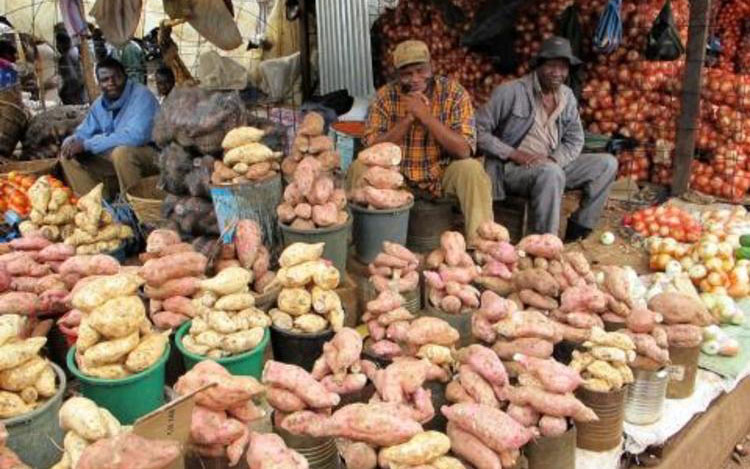Market intelligence sets boundaries for farmers

Charles Dhewa
One of the frequently asked questions by farmers relates to prices of commodities on the market. However, evidence from informal markets indicate that price is not a major determinant of profit-making in agribusiness.
Instead, profit-making is a result of creatively managing costs, quality, losses and aggregation per given market price. The market is always available with its set prices.
It is about how your product becomes competitive per given price. As an ecosystem, the market is a collecting tool of ideas and experiences.
Unless farmers keep track records of their commodities, it is difficult to intelligently plan and project outcomes on the market. You cannot run a business based on trends of the whole market.
The market provides a general map and guide so that you can make intelligent choices. Trends surrounding your own particular commodities give you an idea about how to adjust in line with your resources in terms of costs and quality.
If the market offers $3 per bucket for sweet potatoes, focusing on your resources can show whether you need to stay in the game. In the bread baking industry, a loaf of bread has been set at $1 for more than five years. Given the same ingredients and consumers, bakeries have had to adjust their costs in order to increase their profit margin within a given price of a $1 per loaf.
Where the market segments products into 1st price, 2nd price and 3rd price, farmers have to fit their commodities in these price parameters.
While lack of organised production in the whole agricultural sector can be beyond an individual farmer’s influence, each commercially-minded farmer should make an effort to understand supply levels and competition dynamics in the market.
It is also important for farmers to know other competitive forces outside their commodities. For any given commodity volume, price might fall or increase not due to gluts or shortages but due to new entrants and exits in the market that either stretch or release the market budget.
For instance, if $500 000 is circulating for given volumes of commodities in the market and one commodity, accounting for 5 percent cash in circulation, moves out of the market, it means the same budget covers fewer commodities.
On the other hand, if for the same amount of cash in circulation, a new commodity gets into the market, it stretches the budget in ways that translate to less demand for other commodities.
Agricultural knowledge value proposition
Market evidence can demonstrate the level at which agricultural commodities can achieve break-even, profit or loss. Production and market records can enable farmers to come up with decision-making scenarios.
Farmers have to sit down and come up with cost plans and projected plans. That means examining direct costs, indirect costs, labour costs and economies of scale. In most cases, farmers do not have control on direct costs like the cost of seed, fertiliser and chemicals.
However, they can control labour costs by either deciding to hire affordable labour or use technology during critical stages like planting and harvesting.
Indirect costs include water charges, electricity and transport. Farmers can manage some of these costs through use of cheap technologies like drip irrigation.
As a way of minimising costs through economies of scale, farmers can use evidence to decide how much land to devote to a particular crop in order to earn good returns. Some fixed costs go down as land size increases.
Monitoring economies of scale is also critical from a transportation angle. For instance, farmers can collectively work out the cost-effectiveness of travelling three trips to the market with a one-ton truck or a once-off trip with a seven-ton truck.
Unfortunately, most smallholder farmers have become obsessed with individual marketing such that it is common to see more than 30 one-ton trucks carrying commodities from one area to the market when one big truck can enable them to enjoy economies of scale through sharing transport.
Economies of scale also apply to information-seeking behaviour. Rather than look for market information individually, farmers can reduce the cost of marketing through collective information seeking. Many farmers spend more than $40 on airtime per month looking for information which could easily be mobilised and shared collectively.
Matching standards with market expectations
Farmers can also reduce losses through market-oriented production calendars that inform them when to produce. Understanding market standards and expectations also reduces losses. It is usually through a mismatch between market standards and expectations that farmers lose out.
Another key issue is grading. If farmers do not understand commodity grades and how to aggregate their commodities, they end up depending on the market’s umbrella decisions about quality and other critical factors.
When well-informed, farmers can be able to grade appropriately and push medium to high quality to the market low quality commodities can be re-purposed for livestock and other uses.
Consistency in production and supply is also a very important factor. It is not possible for a commodity to perform well throughout the season. Farmers should specialise on at least three to five commodities in order to spread their risk.
That way there are 60 percent chances of getting better prices. A strong relationship with the market can also be cultivated as farmers become famous for being consistent suppliers. Traders do not often want to waste time and resources looking for new suppliers.
Importance of understanding absorptive capacity
At policy level, there should be a system for showing the absorptive capacity of agricultural markets. Absorptive capacity is a demand issue behind which there is a budget or money in circulation. It determines break-even, loss-making and profit-making prices.
If there is an influx of commodities, the money is distributed to many commodities. Apart from horticulture, there is now an influx of field crops. It means some of the money is going to cow peas, groundnuts, small grains and others. As the season changes, the same budget may be distributed between a few commodities.
Buying power is determined by the influx and withdrawal of various commodities. Unlike the situation with mono crops like tobacco which do not have substitutes and whose price is determined by demand and supply only, in informal markets more than 75 commodities can substitute each other.
For instance, due to a good rainfall season, besides maize, other commodities like sweet potatoes and groundnuts have done well and are already competing with maize. An increase in sweet potatoes means people will eat less porridge which is a derivative of maize. Sweet potatoes, pumpkins and cow peas all compete with maize.
Most commodities affected by prices are seasonal because of a three-month break. When commodities come into the market after a long seasonal break, consumers have a high appetite for them.
Necessities like maize and vegetables do not shift in price because most people produce them for subsistence. Farmers do not often grow these commodities for the market as shown by how only surplus is sold.
These commodities also have a price ceiling which is why maize shortage will never see a bucket going for $15. Usually the surplus is sold on a crisis management basis not planned marketing. When there is suspicion of a national shortage, humanitarian assistance comes in.
Balancing household requirements and market needs
Farmers should plan for the market and household consumption in terms of selecting commodities. Commodities destined for the market face competition, based on factors like price, buyers, standards and specifications.
When producing for the market, make sure the best resources are devoted because you have to satisfy customers who need value for money. It is unlike when you are growing for your own tastes. Consumers have competing forces on their budgets.
Why should a consumer buy your sweet potatoes instead of bread? There are other issues like nutrition, taste, perishability, colour and variety. That is why it is important to research customer preferences and discover what motivates customer decision-making.
Since the market proves that price is not the only determinant of agricultural success, each farmer should focus on the break even. Farmers who use inputs like fertiliser, labour and drip kits should expect to get a different return from those who do not use these inputs.
Farmers should also ask themselves which technology can help them exploit available resources cost-effectively. If peas fetch $5 per bucket and potatoes go for $2 per bucket, differences in the cost of producing each of these commodities should be considered before concluding that peas generate more income.
If the cost of producing peas is $5,50 it means the farmer is making 50c loss yet if producing sweet potatoes costs $1, it means the farmer’s profit is $1.
Converting resources into dollars and cents
Profitability is about converting water, soil and labour into commodities that give you dollars and cents. Farmers should ask themselves how they are converting their indigenous knowledge systems into products.
Indigenous knowledge has to be embedded in competitive commodities not just price on the market. Price is just an expectation guide. A good price may mean nothing if you have already incurred losses.
Approaching agriculture from the big picture in the market provides a growth pattern that can enable farmers to make choices in line with available resources. You can choose high value crops and decide to diversify informed by the big picture.
The market also shows who else is producing what you are trying to produce and the number of players involved. Such intelligence will avoid the band wagon effect where farmers get into the same commodity irrespective of competitive advantage.
- Charles Dhewa is a proactive knowledge management specialist and chief executive officer of Knowledge Transfer Africa (Pvt) (www.knowledgetransafrica.com ) whose flagship eMKambo (www.emkambo.co.zw ) has a presence in more than 20 agricultural markets in Zimbabwe. He can be contacted on: [email protected] ; Mobile: +263 774 430 309 / 772 137 717/ 712 737 430.









Comments